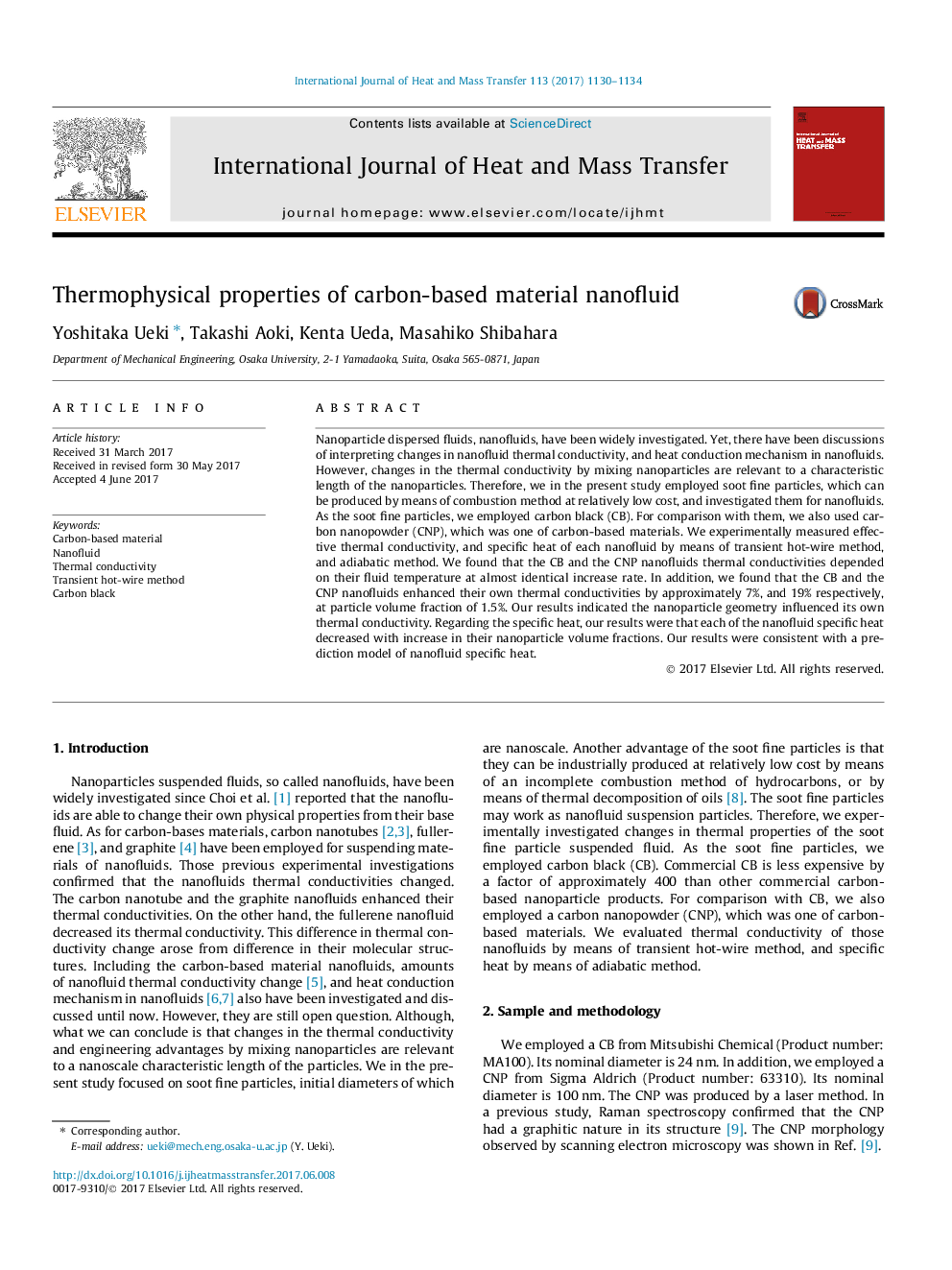| Article ID | Journal | Published Year | Pages | File Type |
|---|---|---|---|---|
| 4994239 | International Journal of Heat and Mass Transfer | 2017 | 5 Pages |
Abstract
Nanoparticle dispersed fluids, nanofluids, have been widely investigated. Yet, there have been discussions of interpreting changes in nanofluid thermal conductivity, and heat conduction mechanism in nanofluids. However, changes in the thermal conductivity by mixing nanoparticles are relevant to a characteristic length of the nanoparticles. Therefore, we in the present study employed soot fine particles, which can be produced by means of combustion method at relatively low cost, and investigated them for nanofluids. As the soot fine particles, we employed carbon black (CB). For comparison with them, we also used carbon nanopowder (CNP), which was one of carbon-based materials. We experimentally measured effective thermal conductivity, and specific heat of each nanofluid by means of transient hot-wire method, and adiabatic method. We found that the CB and the CNP nanofluids thermal conductivities depended on their fluid temperature at almost identical increase rate. In addition, we found that the CB and the CNP nanofluids enhanced their own thermal conductivities by approximately 7%, and 19% respectively, at particle volume fraction of 1.5%. Our results indicated the nanoparticle geometry influenced its own thermal conductivity. Regarding the specific heat, our results were that each of the nanofluid specific heat decreased with increase in their nanoparticle volume fractions. Our results were consistent with a prediction model of nanofluid specific heat.
Related Topics
Physical Sciences and Engineering
Chemical Engineering
Fluid Flow and Transfer Processes
Authors
Yoshitaka Ueki, Takashi Aoki, Kenta Ueda, Masahiko Shibahara,
